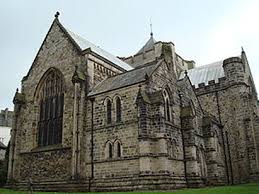Unveiling the Heritage of Bangor Cathedral

Introduction
Bangor Cathedral, situated in the heart of North Wales, is not just a place of worship; it is a significant historical landmark that has stood the test of time for over a millennium. Its significance is not only religious but also cultural, making it a vital piece of Welsh heritage. As one of the oldest cathedrals in the UK, Bangor Cathedral attracts both historians and tourists alike, offering a deep insight into the medieval ecclesiastical architecture and the religious history of the region.
A Brief History
Founded in 525 AD, Bangor Cathedral has an extraordinary history intertwined with the Christian faith’s expansion in Britain. Originally established by Saint Deiniol, the cathedral has undergone numerous reconstructions due to various events, including Viking raids and the English Civil War. The current structure, which showcases Gothic and Romanesque architectural styles, was largely rebuilt in the mid-19th century under the direction of architect Sir George Gilbert Scott, who preserved much of its historical integrity.
Architectural Features
The most striking feature of Bangor Cathedral is its stunning nave, adorned with beautiful stained glass windows and intricate stone carvings that tell biblical stories. The impressive wooden roof, dated back to the 16th century, is a marvel of craftsmanship. Visitors can also explore the cathedral’s grounds, which include a tranquil garden and a small graveyard where notable figures, including clergy and local dignitaries, have been laid to rest.
Recent Developments
In recent years, Bangor Cathedral has embarked on several restoration projects aimed at preserving its heritage and enhancing visitor experience. In 2023, the cathedral launched a new visitor centre, which provides educational resources and guided tours. This initiative aims to increase public engagement and educate visitors about the cathedral’s rich history.
Community Engagement
The cathedral also plays a significant role in the local community, hosting various events, concerts, and ecumenical services that resonate with both locals and visitors. In 2023, it held a series of summer concerts featuring local choirs and musicians, drawing attention to the cathedral as a hub of cultural activity.
Conclusion
As Bangor Cathedral continues to stand as a testament to centuries of faith and history, it serves not only as a religious site but also as a beacon of community and culture in Wales. The ongoing efforts to preserve and promote its heritage will ensure that Bangor Cathedral remains a vital part of both local identity and Welsh history for generations to come. For those seeking to understand the cultural tapestry of North Wales, a visit to Bangor Cathedral is an enlightening experience not to be missed.








